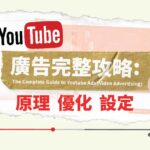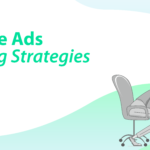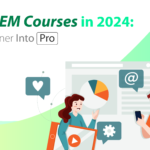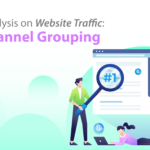If you are a fresh graduate who is currently job hunting or maybe even on your way to a Digital Marketing job interview; or you are an old-school marketing staff, and now wish to get a recap of all the technical terms and specialised abbreviations of Digital Marketing so that you will be able to communicate better with the new employees of the marketing team, then you are in luck! All we need is a brief moment of your time.
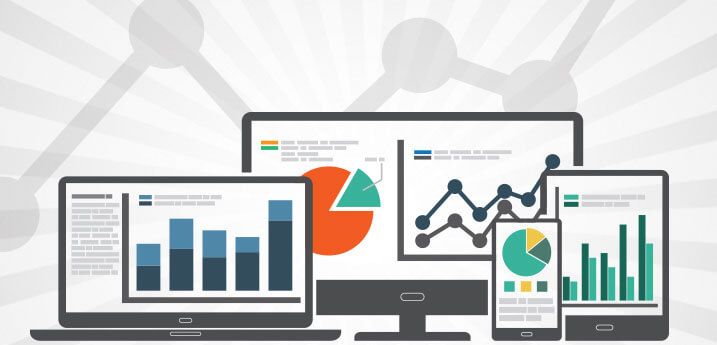
Conceptual Terms:
SEM/Paid Search
Search Engine Marketing, is marketing via a search engine, otherwise known as Paid Search. It means that you pay for your pages to be ranked higher on the search engine result page (SERP), hence securing more traffic. In Mandarin, it’s known as keyword ads or search ads etc.
Recommended Reading: The Ultimate Guide to Google Ads Search Engine Marketing (SEM) in 2023
SEO
Search Engine Optimization, by gradually improving the content and structure of the website, improves the ranking of your web page in the search engine result page and obtains higher traffic without spending a dime.
Recommended Reading:【SEM vs SEO】What’s the Difference and How They Work Together
Paid Social
It usually refers to the regularly seen promotion of FB pages, posts or even websites on their respective advertising platform of social media. The more commonly used social media in Hong Kong are Facebook, Instagram and LinkedIn etc. It’s more widely known as “Boost post” among the public.
Display Ads
This particular ad refers to banners that appear on websites and mobile apps, and most of the banners we see originate from Google Display Network. Most people call this the “Banner ads”.
Recommended Reading: The Complete Guide to the Google Display Network (GDN)
Youtube Ads
Ads on YouTube typically come in two main types. One is the TrueView In-Stream Ads, which play before, during, or after other videos on YouTube and Google video partner sites/apps. These in-stream ads are categorised into skippable and non-skippable types. The other is In-feed Video ads, which showcase your brand, product, or service next to YouTube content that your target audience might watch. These ads appear in YouTube search results, YouTube “Up Next”, and recommended content on the YouTube app.
Recommended Reading: The Complete Guide to Youtube Ads (Video Advertising)
Digital Marketing Automation
Don’t be intimidated by the term! Simply put, it’s about automating marketing tasks to reduce manual operations. For instance, if you leave your email on my website, it automatically synchronises across platforms. Display Ads might target you, Facebook might show you ads and a weekly email might be set up. After six weeks, you might receive an email promoting a purchase. Post-purchase, after 10 days, a discount code could encourage another purchase. If we know a client’s birthday, we could even send a voucher during their birth month. Marketers just need to set up and streamline the automation logic. Post the initial email capture, there’s minimal further setup.
Content Marketing
Content marketing is a strategy focusing on creating, publishing, and promoting valuable, relevant, and engaging content to attract a specific target audience, thereby achieving the brand’s marketing and commercial goals. Unlike traditional advertising, content marketing emphasises establishing trust and connection with the audience through quality content, thus guiding them naturally towards a purchase decision. Sharing stories, and providing useful information, or educational content not only elevates brand recognition but also establishes industry authority and customer loyalty.
Generative AI applications, like the ChatGPT, further aid brands in content marketing by auto-generating and optimising ad copies or message content. Based on consumer data, they automatically produce the most relevant content.
Inbound Marketing
Inbound Marketing focuses on delivering valuable content to attract the target audience, differentiating from traditional “disruptive marketing” like TV ads or cold calls. Through SEO, social media, and blogs, it addresses the audience’s needs, guiding them naturally to your brand.
In real-world terms, what I’m currently doing is a prime example of inbound marketing. By publishing blog posts or offering e-books, I’m sharing valuable content with you, fostering trust step by step. In contrast, disruptive marketing might take the form of directly calling you, emphasising the superiority of my services, or placing ads on Facebook to sell my content management packages. Overall, inbound marketing is more likely to cultivate long-term and profound relationships with the target audience.
Remarketing
An online advertising strategy designed to re-attract users who’ve visited your site or app but didn’t take the desired action, like making a purchase or signing up. Think of remarketing like a store’s salesperson reminding you of a product you glanced at but didn’t buy. Online, if you browse a product without buying, remarketing displays ads of that product while you browse other sites, nudging you back to complete the purchase.
Recommended Reading: GDN Remarketing Ad Tutorial – Setup, Principles, and Benefits
Lead Generation
It’s a strategy aimed at sparking interest in your product or service among potential customers. Think of it as fishing: you put out bait (like a valuable article, free webinar, or special offer), and when someone shows interest and shares their info (like an email), you’ve “caught” a potential client.
KPI Metrics:
Impression
Represents ad exposures. Each time an ad is viewed, an impression is added.
Traffic
Traffic, or more widely known as clicks. Clicks bring traffic to the website.
Conversion
Conversion, meaning any goal that you set, can be the successful sell-off of products, member registration, subscription or obtaining contact information.
Read More: The Complete Guide to Google Ads Conversion Tracking
Reach
Reach, meaning how many people your ad manages to reach or touch. The difference between Impression and Reach is that Impression measures the amount of people while Impression measures the amount of times.
Engagement
Social media platforms emphasise calculating engagement, which includes clicking on the ad, like, comment and share etc.
Landing Page
The shown website page, which is the particular page you are directed to after you click on the website link.
Placement
It usually refers to websites that banner ads used to appear on. These websites belong to Google Display Network (GDN) in Google Ads.
Ad Rank
Ad ranking is constructed based on CPC Bid and the Quality Score.
Read More: Quality Score: How To Check, Monitor & Optimize?
CTR (Click Through Rate)
Click Through Rate is calculated by dividing click by impression, Clicks/Impressions to determine whether the ad is attractive. We usually hope for a higher Click Through Rate.
CVR (Conversion Rate)
Conversion Rate is determined by dividing conversions by clicks, Conversion/Clicks to determine the attractiveness of a website/product. Ideally, we aim for a higher Conversion Rate.
CPC (Cost Per Click)
The cost for every click, and obviously we would prefer a lower Cost per click
CPM (Cost-per-thousand-impression)
The cost for every 1000 impressions, and we typically aim for a lower Cost-per-thousand-impression.
CPE (Cost per engagement)
The cost for every engagement, and it would be better for us to strive for a lower Cost per engagement.
CPA (Cost per acquisition)
The cost for every conversion, and we usually aim for a lower Cost per acquisition.
ROI (Return On Investment)
This metric represents the rate of return on an investment, calculated as (Revenue – Cost) / Cost. It reflects the effectiveness of an investment.
ROAS (Return on Ad Spending)
This specifically denotes the return on advertising expenses. It measures how much revenue is earned for every dollar spent on advertising, calculated as (Revenue from Ads) ÷ (Ad Spending). This metric is focused on evaluating the efficacy of specific advertising campaigns or strategies.


